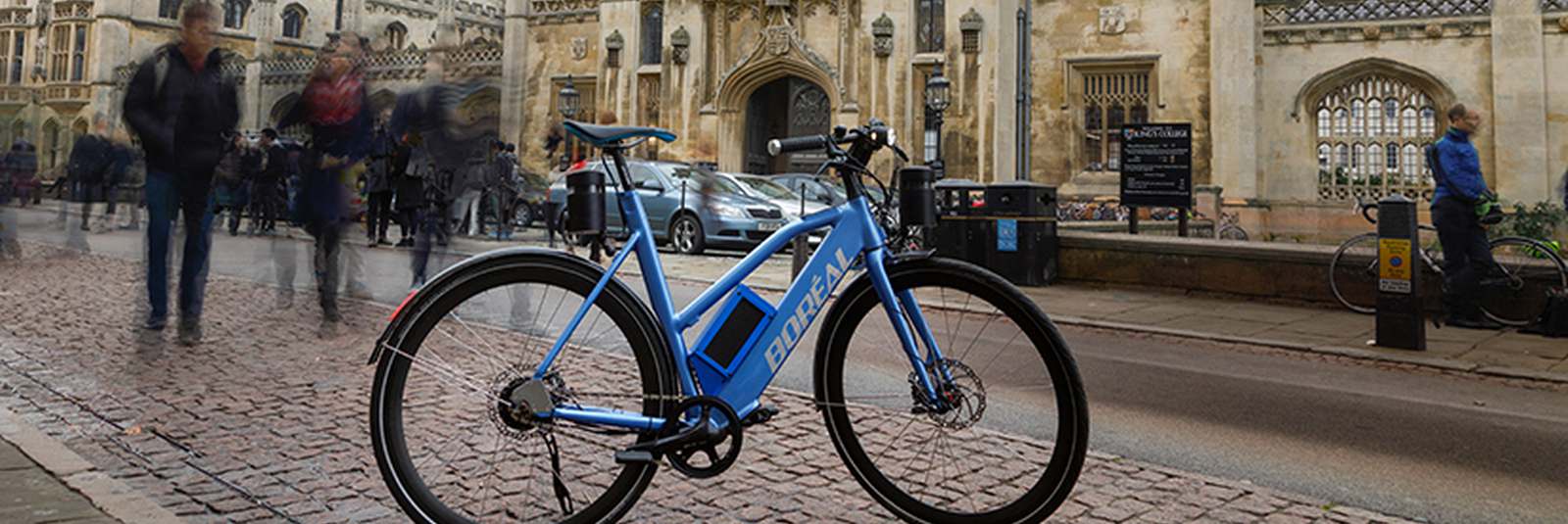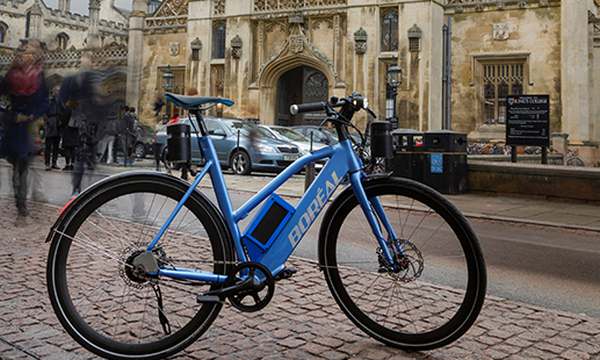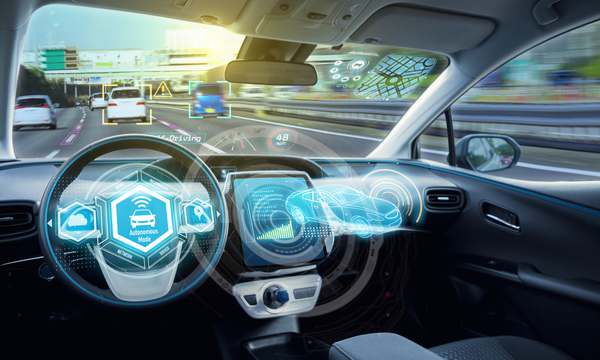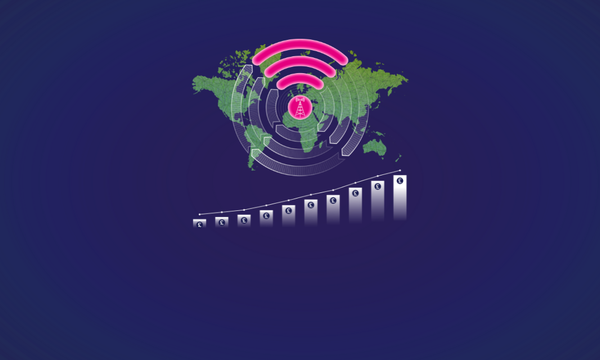
Smart cycle systems
This article is from the CW Journal archive.
The bicycle has been around for over 200 years and for all of that time it’s been fine without sensors and storage. The reaction to the term ‘connected bike’ might well be “why?” After all, a bike is an expression of freedom, a way to escape, to get closer to the real world, connecting it might seem to be an inherently bad idea.
In practice, bikes have had various forms of data recording almost from their inception – remember the simple milometer based on a metal pin clicking round a counting wheel? Recording is not the same as connecting but if something is being recorded why not connect and upload it?
For the non-cyclist it might come as a surprise that it’s now perfectly normal for a racing bike to have a wide variety of sensors measuring things like:
• Speed (from which distance can be easily deduced)
• Cadence (the rate of pedalling)
• Power (the wattage produced by all the pedalling)
• Heart rate (a sensor for the cyclist and not the bike)
• Current gearing (on bikes with electronic gear shifting)
All of these sensors typically link to a ‘head-unit’ display, mounted on the handlebars, using wireless solutions such as ANT+. The head-unit looks a bit like a mobile phone (indeed, mobile phones can be used for this), with a display and processing capabilities. Typically, this connects via Bluetooth to the rider’s mobile phone, allowing the uploading of data and downloading of information, such as weather forecasts, and alerts of incoming calls and texts (if the rider wants them). A package like this might cost £200 to £500, depending – a small price for many keen cyclists and less than a decent pair of wheels.
For the wannabe fighter pilots, there are even heads-up display units that clip onto the cyclist’s sunglasses to provide some of the data in their field of vision. To date, these have not found favour because of their short battery life and the fact they they tend to be obtrusive, often making the cyclist feel rather self-conscious.
Once the data is uploaded, there are plenty of tools available to record and analyse it. Pre-eminent among these is Strava, a website and app for cyclists, runners and swimmers. It will take an uploaded ride, plot it on a map, deduce a ‘suffer score’, give the rider their relative performance on ‘segments’, and allow them to share their results with friends. Strava also provides fitness analytics over time, advice to improve performance, and much more.
There’s even a saying that “if it’s not on Strava you didn’t ride it” – and many riders get quite irate if, for whatever reason, a ride fails to record and upload (although Strava does allow you to manually enter it).
|
GET CW JOURNAL ARTICLES STRAIGHT TO YOUR INBOX Subscribe now |
As might be expected, these devices can also provide navigation. Cyclists devise a route at home and Strava can provide statistics such as estimated ride time. Once finalised, the route can be uploaded to the head-unit to provide navigation during the ride.
All of this is current technology and many of the features have been available for almost a decade – but there are still many ideas emerging that could show where to go next.
One idea is connected lighting, which is being pioneered by a UK company called See.Sense. The lights have Bluetooth connectivity to link to a phone and, more recently, ANT+ connectivity has been added to link to head-units. The manufacturer provides a number of features, such as:
• Changing brightness intelligently, for example, when other cars are detected
• Allowing detailed battery level to be displayed on the phone, rather than the more normal red-light warning when the battery drops below about 25 per cent charge
• An anti-theft warning sent to the rider’s phone when the bike is moved unexpectedly
Although I’ve used these lights, and they’re fine as lights, I struggle with the need for connectivity. Lamps that are bright all the time seem fine but having to get my smartphone out to check the battery level seems unnecessarily time-consuming. I suspect the anti-theft warning would go off just in time to run out of the café and see the thief cycling off into the distance – I trust a lock more.
A different manufacturer Garmin has a rear light with built-in radar that can detect cars approaching from behind. It also changes the brightness as the car gets closer and can send a message to the head-unit alerting the rider to an approaching car. Some say they like to know what’s happening behind but, for me, I’m either in traffic, in which case there’s always something behind, or I’m in the countryside where my ears work as perfectly good rear-sensing radars – and knowing there is a car behind would not generally change my behaviour. As yet, none of these connected lights appear to have enjoyed any real commercial success.
It is worth mentioning that bike lights have come along amazingly. Even tiny lights can now cast powerful beams that provide excellent illumination.
But this is all just the bike tech of observing and recording. A bigger question is whether the bike should interact with its environment and other road users. CW Journal tested a bike by Boréal, which looks suitably hi-tech. The machine itself is a fairly standard e-bike (electrically-assisted bike) but what is attached to it is interesting.
While town planners want to incentivise cycle use, all the v2v data they have is from cars.
The bike has front and rear lidars and cameras to allow it to understand what is happening around it. These link to a powerful on-board computer that can perform tasks such as image recognition and, of course, it is extensively connected to the wider world through Bluetooth, Wi-Fi and cellular. It is a one-off prototype to evaluate what might be useful and how riders might react – what is finally signed off will likely be quite different.
The aim of Boréal is to allow the bike to be part of a connected road system. There are already standards to allow cars to talk to each other (see Connected Cars in this issue), so it would seem sensible for bikes to talk to cars, too. This could be a way to improve safety (because autonomous cars often struggle to spot cyclists), and lead to better-designed roads as data on near-misses, unusual behaviour and sharp braking is analysed.
The company also has novel ideas on how to communicate suggested actions to cyclists – for example, it has handlebars that vibrate either on the left or the right to indicate a recommended turn; it has speakers front and back that can be used to make sounds that indicate the direction of a hazard. The handlebars worked well, even through thick gloves with cushioning pads, and certainly make sense as a non-distracting way to allow the cyclist to keep watching the road.
The Boréal bike may be of less interest to the performance cyclist who would be unwilling to accept the added weight, would probably prefer a different kind of handlebar less amendable to vibration, and may be more confident in dealing with traffic. It might, therefore, be more relevant to the commuter, dealing with city traffic and navigation. It certainly seems important that, as cars begin to talk to each other, bicycles have a voice, too, and companies like Boréal are planning to be part of that future.
So the connected bike is a reality, with plenty of interesting ideas coming down the line – but we mustn’t forget that sometimes it’s nice just to switch everything off and enjoy the countryside...
|
GET INVOLVED WITH THE CW JOURNAL & OTHER CW ACTIVITIES |
William is CTO at Access Partnership. He was one of the founding directors of Neul, a company developing machine-to-machine technologies and networks, which was formed at the start of 2011 and subsequently sold to Huawei and became CEO of the Weightless SIG, a body standardizing IoT technology. Prior to this William was a Director at Ofcom where he managed a team providing technical advice and performing research. He has worked for a range of communications consultancies and spent three years providing strategic management across Motorola’s entire communications portfolio, based in Chicago. He was IET President 2014-2015.
William has published 17 books, 100 papers, and 18 patents. He is a Visiting Professor at Southampton University, a Fellow of the Royal Academy of Engineering, the IEEE and the IET. He has been awarded multiple honorary doctorates by the UK’s leading universities and in 2018 was awarded the IET’s prestigious Mountbatten Medal for technology entrepreneurship.











